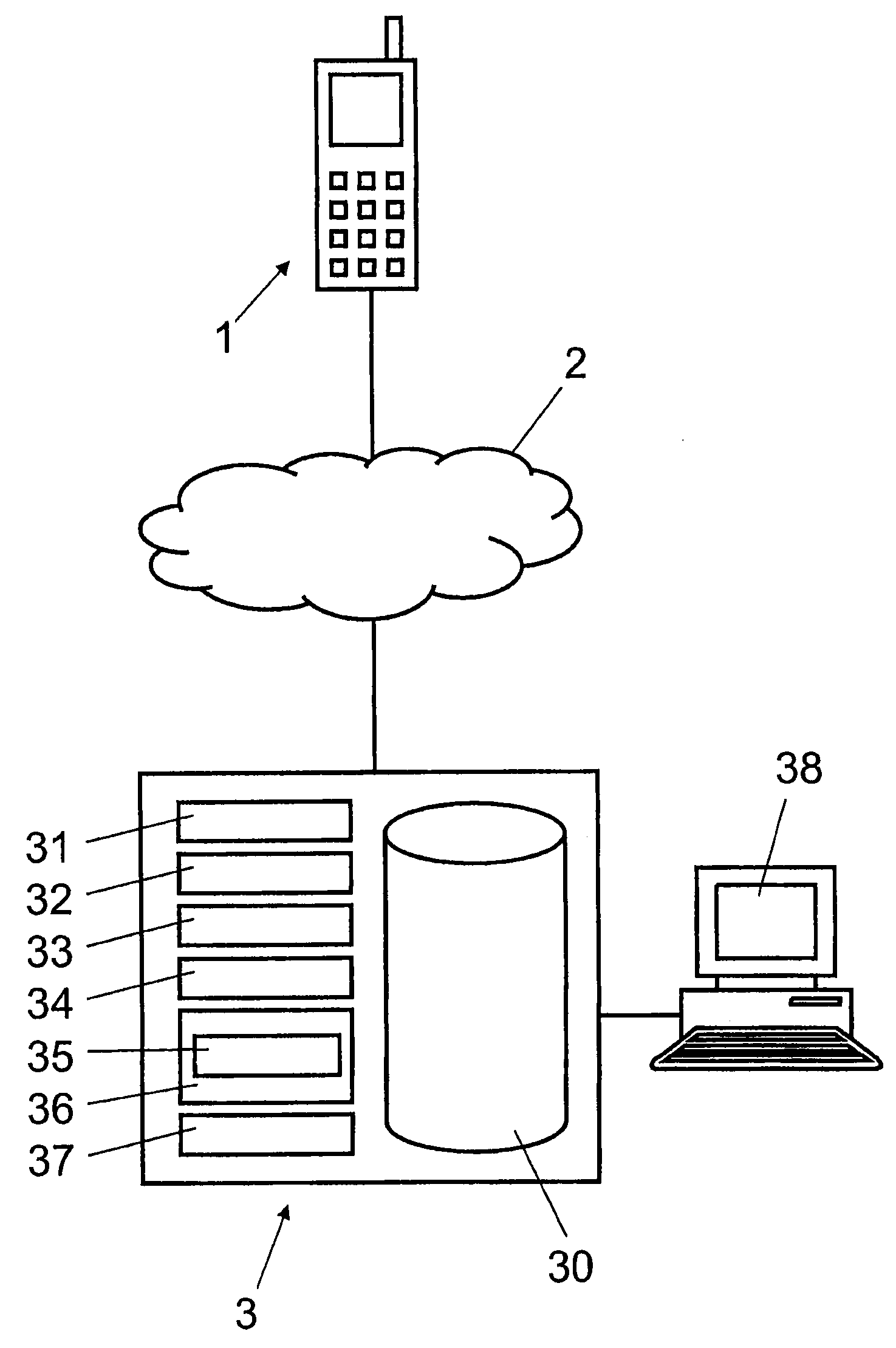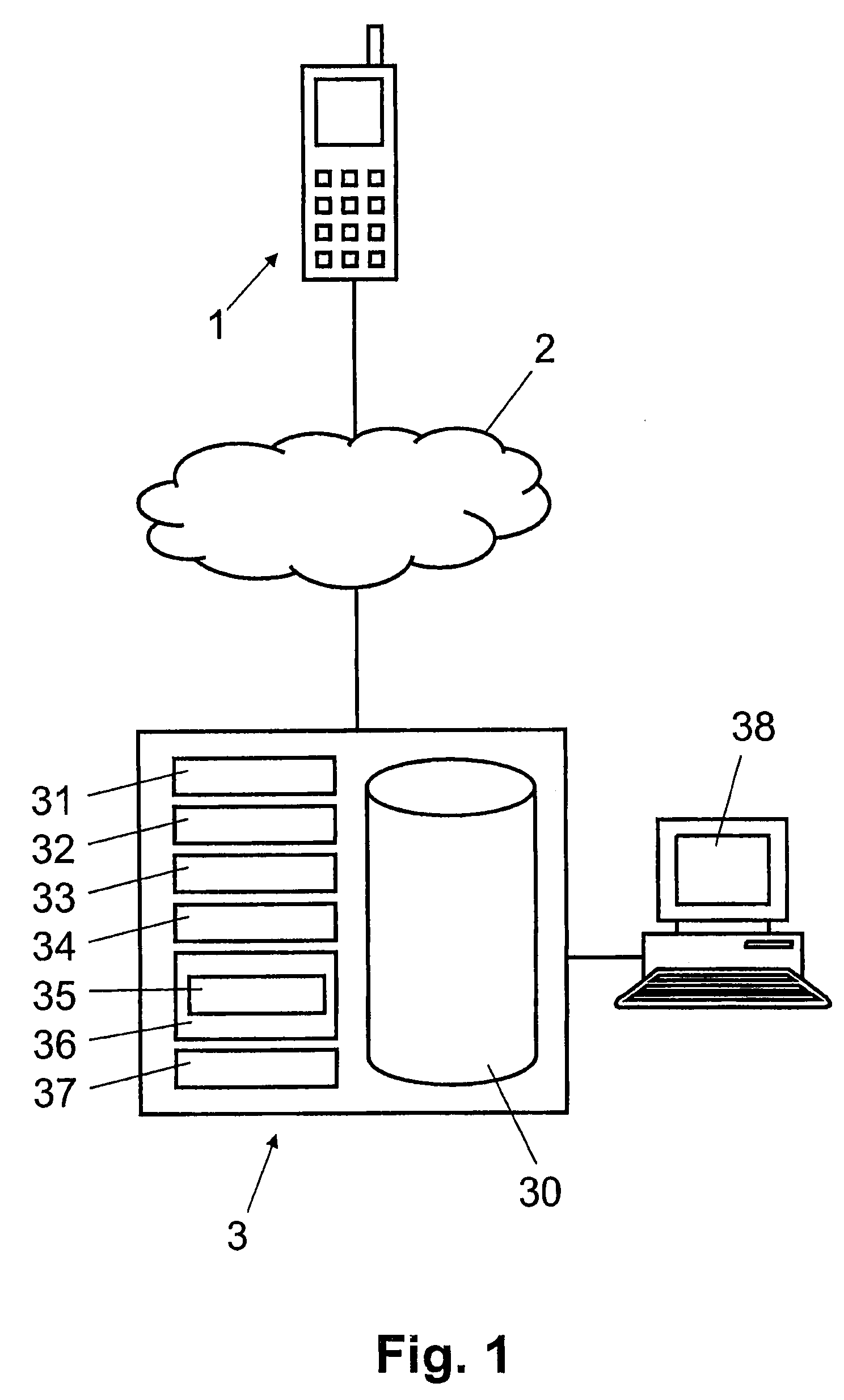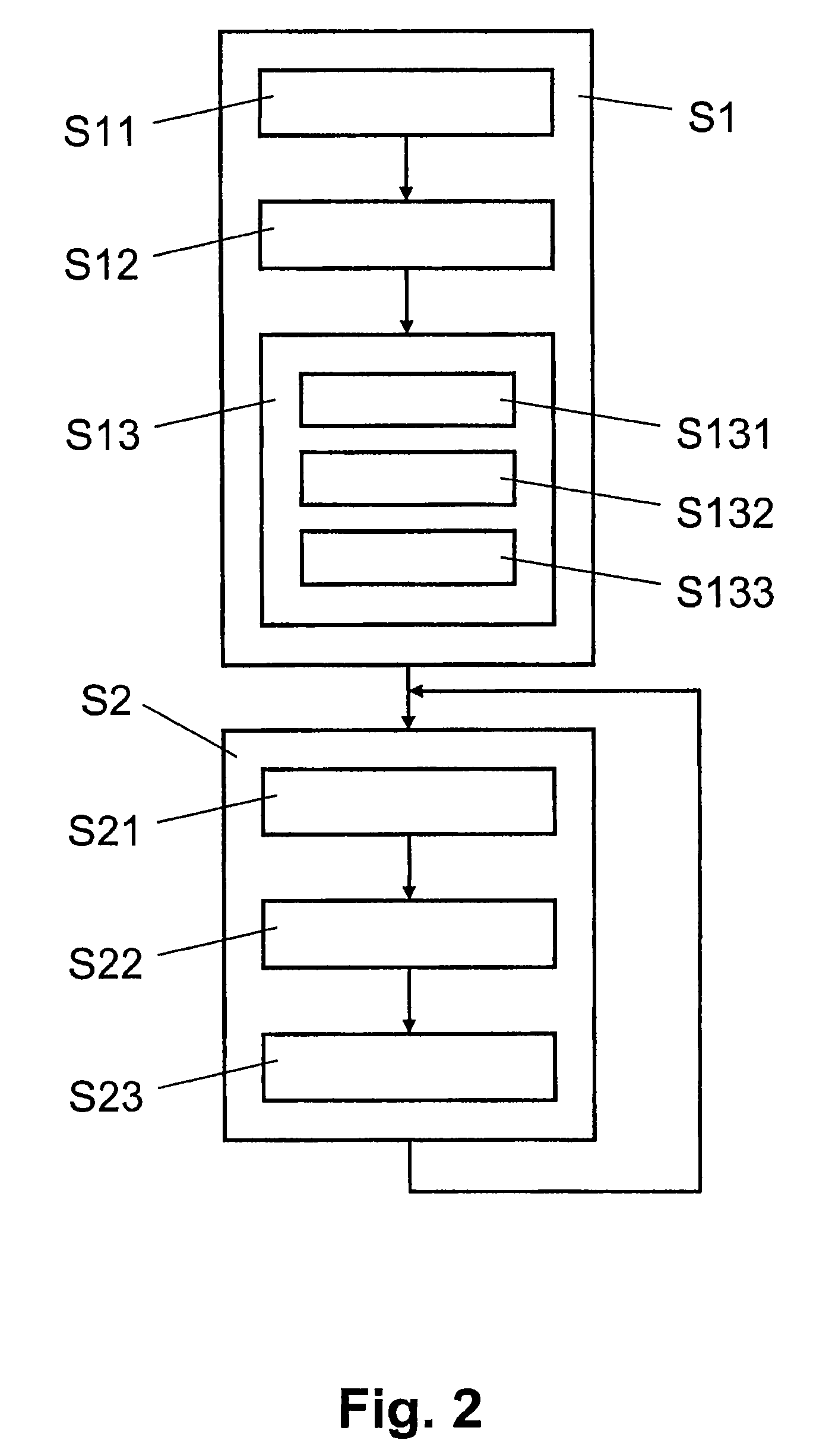System and method for determining a location area of a mobile user
- Summary
- Abstract
- Description
- Claims
- Application Information
AI Technical Summary
Benefits of technology
Problems solved by technology
Method used
Image
Examples
Embodiment Construction
[0023]In FIG. 1, reference numeral 1 refers to a mobile communication terminal such as a mobile radio (cellular) telephone, a PDA or another portable computer. The mobile communication terminal 1 comprises a communication module for communicating (voice and / or data) via mobile radio network 2, e.g. a GSM or UMTS network or another cellular radio network. As illustrated schematically in FIG. 3, the cellular network comprises a plurality of antennas A1, A2, A3, A4, each covering a more or less overlapping area C1, C2, C3, C4 of the geographical area 4. Each antenna A1, A2, A3, A4 is controlled by a base station connected to a mobile switching center (e.g. MSC) of the mobile radio network 2. The antennas A1, A2, A3, A4 are identified by their identification id in the network, which correspond to the areas C1, C2, C3, C4.
[0024]In FIG. 1, reference numeral 3 refers to a computer system connected to the mobile radio network 2. Computer system 3 includes one or more computers, for example ...
PUM
 Login to View More
Login to View More Abstract
Description
Claims
Application Information
 Login to View More
Login to View More - R&D
- Intellectual Property
- Life Sciences
- Materials
- Tech Scout
- Unparalleled Data Quality
- Higher Quality Content
- 60% Fewer Hallucinations
Browse by: Latest US Patents, China's latest patents, Technical Efficacy Thesaurus, Application Domain, Technology Topic, Popular Technical Reports.
© 2025 PatSnap. All rights reserved.Legal|Privacy policy|Modern Slavery Act Transparency Statement|Sitemap|About US| Contact US: help@patsnap.com



